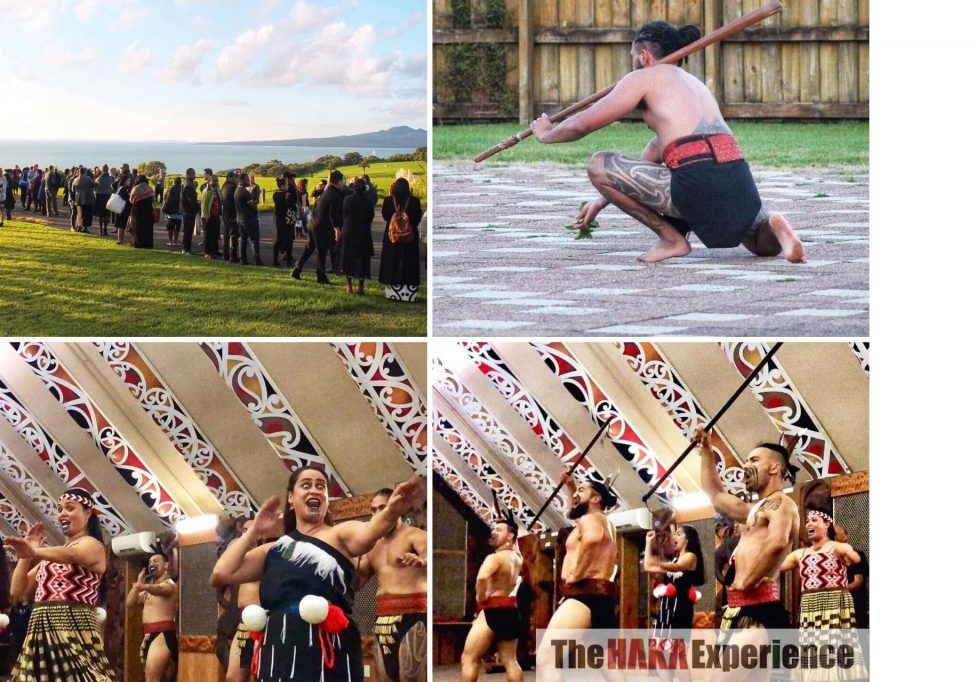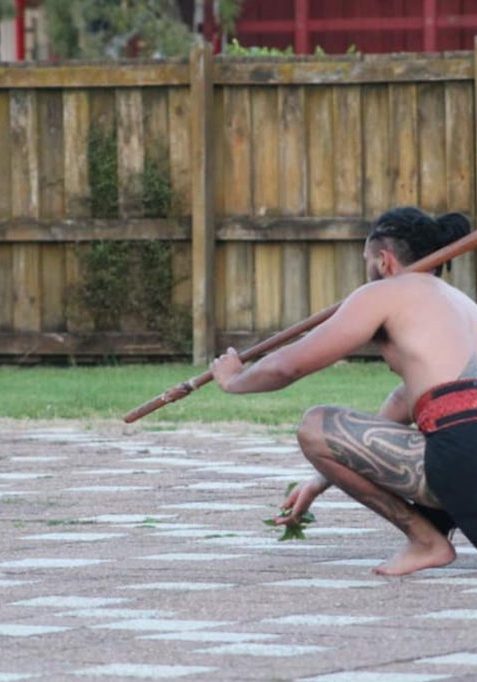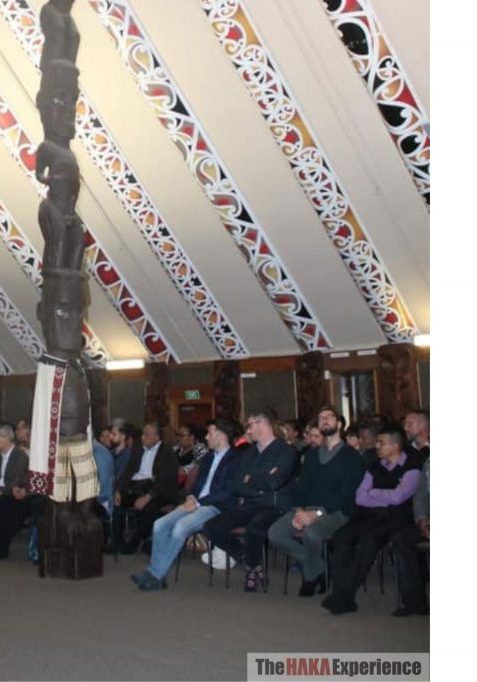Haka Pōwhiri For South Pacific Tourism Exchange 2019
Date of Event: May 8, 2019








South Pacific Trades Exchange hosted by Ngati Whātua Orakei.
In May 2019, we had the privilege to perform at the South Pacific Trades Exchange hosted by Ngati Whātua Orakei. We value these opportunities that help to strengthen the connections between Te Wehi Haka, Mana whenua and our neighboring Pacific Island Nations.
Te Wehi Haka provided a unique Māori cultural performance and exposed our guests to Māori customs and protocols. The manuhiri (guests) were welcomed onto Ōrakei Marae where they were a part of a traditional welcoming called a pōwhiri. Te Wehi Haka provided a unique kapa haka entertainment after the pōwhiri which was tailor-made to suit the event, the guests and kaupapa (purpose) of the evening.
Te Wehi Haka was originally asked to conduct the pōwhiri as well as the performance but Tapeta made the decision to ask the tanagta whenua if they wanted the opportunity to do the pōwhiri in respect of them, their marae, whenua (land) and kainga (home).
Tapeta carefully chose kapa haka items that uplifted the wairua (spirit) of the night continuing on from a sacred and heavy pōwhiri ritual. Songs such as a happy waiata-a-ringa (action song) that welcomed our manuhiri to Tāmaki Makaurau (Auckland).
The poi (poi dance) was chosen as it is an up-beat, light song. It is fun and cheeky and lifts the mood. To finish off, Tapeta chose the haka, Ka Mate, as a way to entice the guests and give them one final show as this haka is very common with the All Blacks. It’s famous, and our guests relate to it because it’s something familiar.
What Is The South Pacific Tourism Exchange?
The South Pacific Tourism Exchange (SPTE) is an special program born out of the the need to offer a one-stop shop for valued international travel partners to meet regional tourism products and suppliers from the islands.
It offers the convenience of meeting all Pacific island destinations and a cost-effective platform for Pacific Island partners to travel from all corners of the Pacific Ocean to Auckland, New Zealand display their exciting products to international buyers from all across the globe.
WE DELIVER POWERFUL AND PURPOSEFUL
CULTURAL EXPERIENCES
Let’s plan your next event or function today!

The Day In Photos
Our kaiwero runs out of the wharenui (meeting house) holding his taiaha (traditional wooden weapon). He is usually the fastest and strongest warrior. He is challenging the manuhiri and trying to intimidate them to see weather they come as friends or foe.
He does this by showing off his weaponry skills- jumping up and down, running and whetero, pukana. It is common for kaiwero to chanelle a spirit animal which is represented in his movements. Using the pointed, sharp part of his taiaha to present war-like moves. Sharp strikes, swinging of the taiaha in the air and stabbing thrusts. All while making eye-contact with the manuhiri and in particular their rangatira (chief/leader). He will then lay the taki (leaves/feathers) down and present it to the rangatira. The way the taki is picked up determines weather the manuhiri come with good intentions or not. There are two outcomes that can occur; 1. The rangatira does not pick up the taki and/or challanges the kaiwero back, by sparring with him. These actions let the kaiwero and tangata whenua (people that are from that Marae) know the manuhiri do not come with good intentions and are foe. This does not usually occur these days. 2. The rangatira picks the taki up and holds it above his head signalling to the kaiwero and tangata whenua that he accepts the challenge and is here as friends with good intentions. This is the usual outcome these days. And is what occurred in the picture. The kaikaranga (female that does the calling) welcomes the manuhiri onto the marae by calling out. She is usually the eldest, most knowledgable woman. She also will remember the guests tipuna (ancestors) and her own tipuna to show respect. As well as acknowledging the recently passed. She will call on the different atua (gods) to help welcome the manuhiri safely onto the marae and she will acknowledge the kaupapa (purpose) of the hui (gathering/meeting). The manuhiri will have a kairangara on their side to respond as well. After a couple of karanga have taken place, the tangata whenua perform a haka powhiri. They stand in rows, side-by-side, quivering their hands as they perform appropriate actions to the haka. Welcoming the manuhiri onto their marae and their land. To share the warmth of their wharenui, kōrero (stories) and kai (feast/food). While the haka powhiri is still taking place, the manuhiri take their shoes off before entering the wharenui as a sign of respect. They are then seated on the opposite side of the wharenui to the tangata whenua. Men sit in the first couple of rows of chairs and woman behind. The first row of men on either side of the wharenui (manuhiri&tangata whenua) are the kaikōrero (speakers) of both parties. These men are usually the most knowledgeable, matatau ki te reo Māori (reo Māori experts) and rangatira of the party. The tangata whenua will start with a whaikōrero (formal speech). They will formally welcome the manuhiri. The manuhiri will then respond with a whaikōrero and lay down/offer a koha (gift-usually money) to contribute to costs of the event, usually food. A waiata tautoko (supporting song) is sung after each whaikōrero. They proceed to do the hongi (pressing of the nose). Everyone lines up and hongi each other. It is said that this is the connection between the two people and the two parties. They come together and share the ‘breath of life’. This sacred ritual originates from the kōrero purakau (story) of our atua (gods), Hine-ahu-one and Tāne-nui-a-Rangi. Hine-ahu-one was the first woman to be created by Tāne-nui-a-Rangi, her husband. He shaped her body with the earth at the beach at Kurawaka and breathed the breath of life into her nose, causing her wake up and she was alive. The formal welcoming is concluded with a hakari (feast), prepared by the tangata whenua. It is a chance to mingle with each other and share stories. But more importantly, it is meant to lift the tapu (sacred nature) of the pōwhiri and the manuhiri and tangata whenua are united as one. In most instances the tangata whenua will entertain the manuhiri at the hakari with waiata-a-ringa (action song), poi (poi dance) and haka (war dance). This performance is to make the manuhiri feel welcome, to pay homage to the kaupapa and to thank the manuhiri for attending. In this case, the manuhiri were entertained after the hakari, in the wharenui. The peformance was tailor-made by Te Wehi Haka for the event. You see here our beautiful woman showing off their enticing eyes by doing the pukana while performing the waiata-a-ringa. Our fierce men are performing with their taiaha and showing the different strikes and blocks that you would use in war.
Photos
Categories: Events & Performances, Haka Powhiri
Tags: Distinguished Guests, Events




